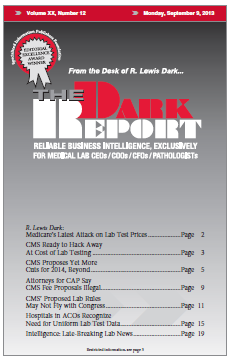CEO SUMMARY: In July, CMS proposed rules to cut payments under the Hospital Outpatient Prospective Payment System, the Physician Fee Schedule, and the Clinical Laboratory Fee Schedule. Under each program, the proposed payment cuts could have a significant and negative effect on the amount of payments that laboratories receive from Medicare. Two of the proposals […]
To access this post, you must purchase The Dark Report.


